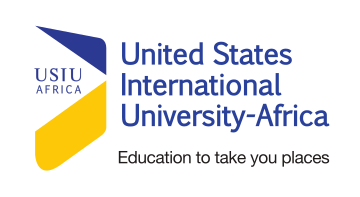International Youth Day - Recognizing Youths with Disability
by SOLOMON Njengah
Introduction and History
United Nations declared 12 August as the International Youth Day and is commemorated every year. in 1999, the UN General Assembly in its resolution 54/120, endorsed the recommendation made by the World Conference of Ministers Responsible for Youths (Lisbon, 8-12 August 1998) that 12 August be declared International Youth Day. The day is a global opportunity for youth across the world to organize activities that raise awareness about the situation of youth in their countries.
Youth with Disability
Though the actual figures are uncertain on the exact number of youths with disability in the world, one thing is clear – that individuals with disabilities form a significant proportion of the youth population in every society. The number of youth with disabilities is likely to increase due to the large youth populations in most developing countries and to medical advancements which promote higher survival rates and life expectancy after impairment-causing diseases, health conditions, and injuries. In fact, youth itself can be a contributing factor to disability as young people are at an increased risk of acquiring a disability through such incidents as road traffic accidents, injuries from diving and other sport activities, violence and warfare (Aito et al. 2005, Cripps 2003, Karacan et al. 2000).
Challenges faced by Youth with Disability and Alleviation strategies by The Convention on the Rights of Persons with Disabilities (CRPD)
According to UNICEF (2013), youth with disabilities are among the most marginalized and poorest of the world’s youth population and are more likely to face severe social, economic, and civic disparities as compared with those without disabilities, even in developed countries.
For many young people with disabilities, exclusion, isolation, and abuse as well as lack of educational and economic opportunities are daily experiences. However, The Convention on the Rights of Persons with Disabilities (CRPD) and with the 2030 Agenda for Sustainable Development are making strides towards the greater inclusion of youth with disabilities in society and development, as well as toward the realization of their human rights. According to United Nation’s Department Of Economic And Social Affairs Disability Section, there are numerous challenges that affects youth with disability. Latest reports highlight some of the challenges, which include;
- Poverty: While young people in general experience poverty at higher rates than their older counterparts, youth with disabilities are especially at risk of falling at or below the poverty line. The CRPD notes this crisis of poverty among persons with disabilities; Article 28 calls for the creation of poverty-reduction programs targeted at persons with disabilities and their families.
- Lack of education: Youth with disabilities have a lower probability of entering, staying or advancing in school than children without disabilities (World Health Organization, 2011). Article 24 of the CRPD addresses these inequalities and seeks to ensure that persons with disabilities are included in the general education system and that individual supports and accommodations are provided to facilitate the development of their full potential.
- Transitional challenges to work and financial independence: Many young people with disabilities face a difficult period of upheaval and uncertainty as they transition from childhood into adulthood, primarily with regards to achieving successful employment and independent living.
- Unemployment: Unemployment rates for youth with disabilities are higher than for the rest of the youth population in every society (Mitra, Posarac & Vick, 2013). Article 27 of the CRPD stipulates that all persons with disabilities, including youth, have the right to work. To this end, many governments (local, regional and national) have implemented incentives for hiring persons with disabilities as part of efforts toward a more inclusive society.
- Rejection: Young people with disabilities often experience rejection and seclusion due to their peers’ misconceptions, or prejudices. Feelings of loneliness and isolation may be reinforced by activities and spaces that are inaccessible to persons with disabilities. CRPD avers that, concerted efforts are needed to raise awareness and disseminate accurate information that challenges misconceptions and stereotypes about persons with disabilities.
To date, most societies have not fully integrated youth with disabilities, leading to the exclusion and isolation of a large and important segment of the population. Clearly, more work is required to create an integrated and equitable world for youth with disabilities. Providing opportunities for full and equal social, civic, economic, and political participation is beneficial not only to youth with disabilities, but also their surrounding societies, allowing youth to contribute fully to the country’s development and economic growth to fullest extent of their abilities.
The CRPD and the 2030 Agenda for Sustainable Development offer a plan for including all persons with disabilities in all aspects of society and development. The implementation and realization of this plan will require focused attention and effort by all stakeholders, especially Governments and policy makers, to ensure that the rights of persons with disabilities remain a priority and that all persons may exercise the same rights regardless of disability status.
